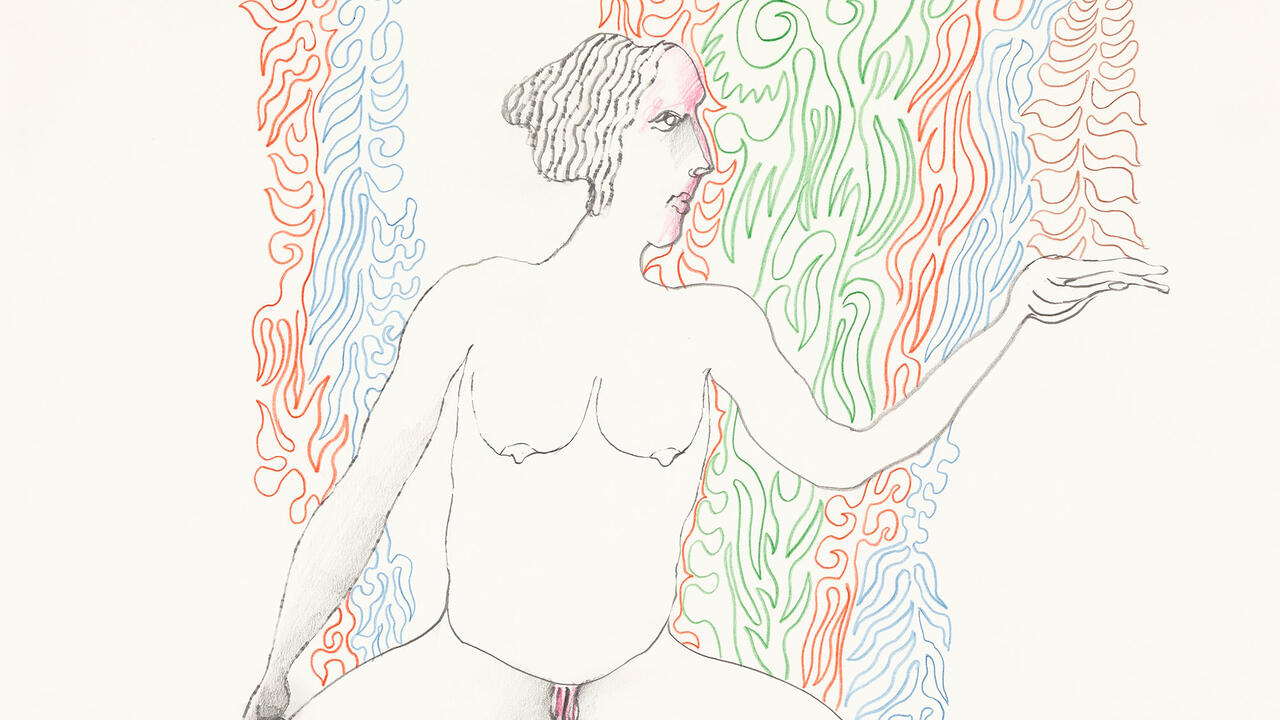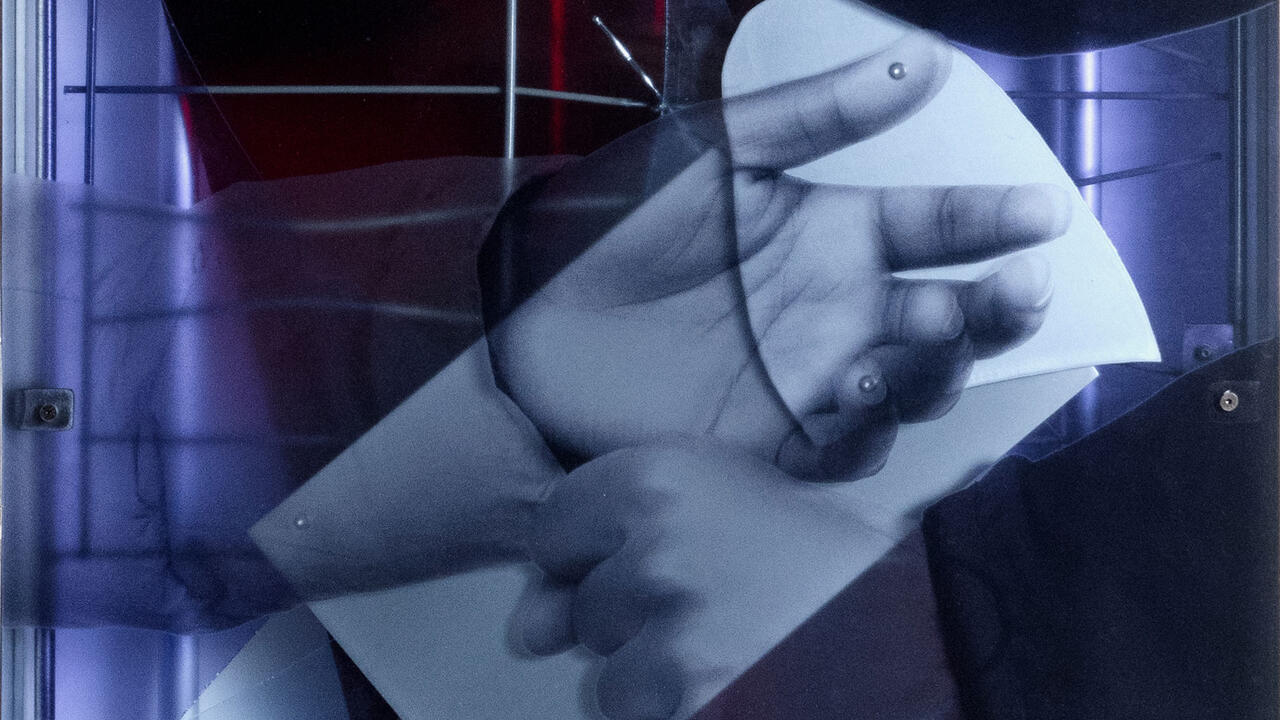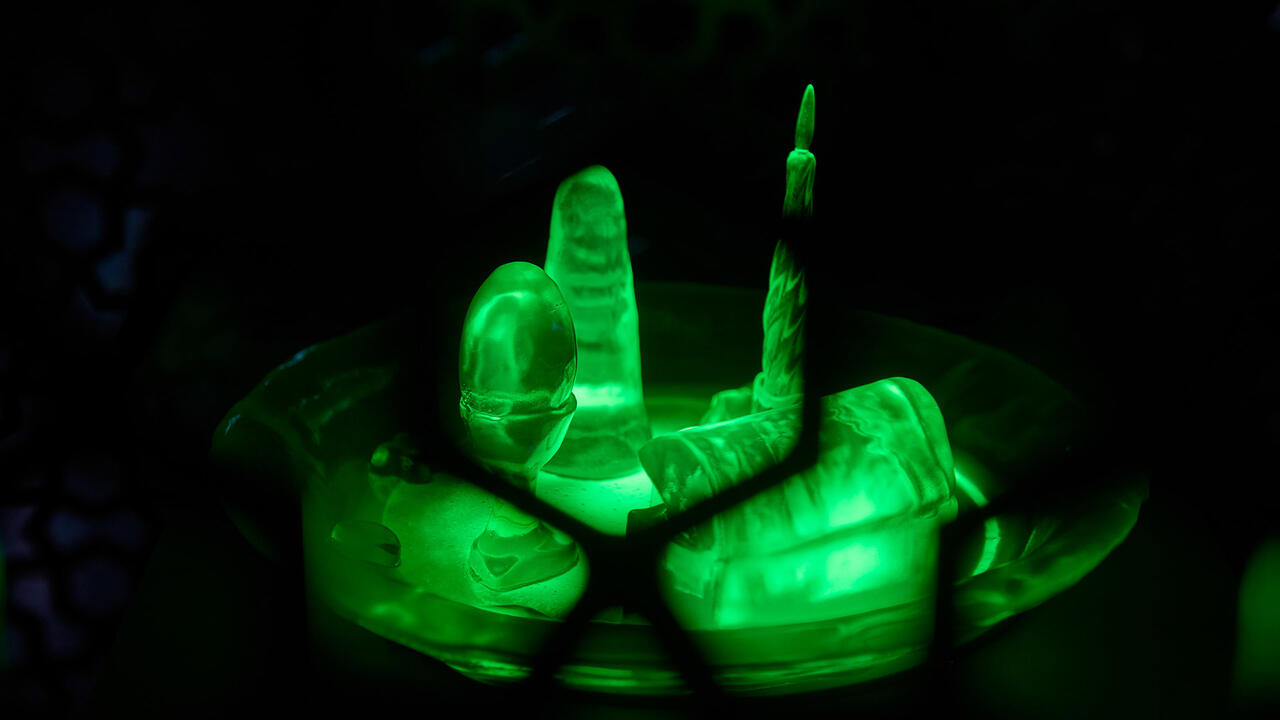Emilio Prini: Italian Maverick of Ephemeral Actions
A posthumous retrospective at MACRO, Rome, attempts to represent the artist’s demateralized practice through a trove of documentation
A posthumous retrospective at MACRO, Rome, attempts to represent the artist’s demateralized practice through a trove of documentation

Hailed in Italy as a nonconformist artistic genius, Emilio Prini – who died in 2016 aged 73 – pursued a relentlessly conceptual practice intrinsically linked to his enigmatic and impossibly cool persona. Comprising more than 250 works installed chronologically, ‘…E Prini’ attempts to pin down the artist’s subversively ephemeral actions – which included confirming his attendance at an exhibition via telegram and communicating works of art through telepathy – but, instead, offers a seemingly unedited trove of archival documentation that threatens to overwhelm the handful of works he left behind.

Like many fellow artists and students of his generation who came of age during Italy’s 1960s economic boom, Prini was anti-establishment and critical of the nascent consumerism of the era. One of the earliest works in the show is Perimetro misura a studio stanza (Perimeter of a Studio Space, 1967), a reel wrapped with neon light that the artist created for the seminal exhibition ‘Arte povera e IM spazio’, curated by Germano Celant at Bertesca Gallery in Genoa, which launched one of Italy’s most celebrated and revered contemporary art movements. Using commonly found materials, the work was an early example of Prini’s ongoing concern with measuring, inhabiting and documenting space.

The photographic series ‘Strada in Salita’ (1967) pushed this concern further by surveying and recording the architectural details of public spaces in Genoa and Rome, including underpasses, walls and steps. In 1995, a selection of these urban structures were transformed into sculptures for Prini’s show ‘Fermi in Dogana’ (Detained at Customs) at the Ancienne Douane in Strasbourg. Under Prini’s direction, these casts of unremarkable spaces gained new relevance and poetry. Several of them are on view here, including the captivating Scala nel sottosuolo (sottopassaggio) (Underground Stairway, Underpass, 1967–95), an encased iron stairway leading towards nothingness.

A large section of the show is dedicated to photographic or textual documentation of Prini’s actions. These include a group of black and white images from 1969, when, in response to an invitation to show at the Stedelijk Museum in Amsterdam, Prini chose to set up camp in a field outside with fellow artists and friends, including Paolo Icaro, Jannis Kounellis, Marisa and Mario Merz. Elsewhere, he is portrayed in 40 different colour photographs that each document the action ‘I looked out the window; it was sunny’. Perched on his studio windowsill, his hair long and messy, he sports his trademark red and white striped top, his gaze directed away from the camera (Sequenza fotografica dell’artista alla finestra del suo studio, Genoa, Photographic Sequence of the Artist Sitting at the Window of his Studio, Genoa, 1968). Each image is carefully staged, betraying a keen aesthetic awareness, down to the compelling beauty of a crumbling wall.

Considering Prini’s focus on a dematerialism, it is curious just how much material is included in this retrospective. While the show pays homage to the artist’s open-ended practice with a similarly open-ended presentation – where invites sit alongside catalogues and photographic documentation on an equalizing horizontal line that traverses the gallery walls – the exhaustive display gives the impression that the exhibition’s curator was too enthralled by its subject to determine what to cut and what to keep.
The works that best exemplify Prini’s brilliance are, to this critic’s mind at least, the tangible ones he left behind. Tucked into a corner of the gallery, Collezione da scavi – Ferro Curvato (Excavation Collection – Curved Iron, 1980) is a gorgeous, minimalist iron sculpture that appears to coil upwards to the ceiling from the ground casting squiggly shadows on the wall behind it. With a title that nods to excavations and history, to Rome and to the iron rods that support its buildings, this work inspires us to reflect upon how we perceive space and ourselves within it.
Emilio Prini’s ‘...E Prini’ is on view at MACRO, Rome, until 31 March
Main image: Emilio Prini, ‘…E Prini’, 2023, exhibition view. Courtesy: MACRO, Rome; photograph: Melania Dalle Grave, DSL Studio






















